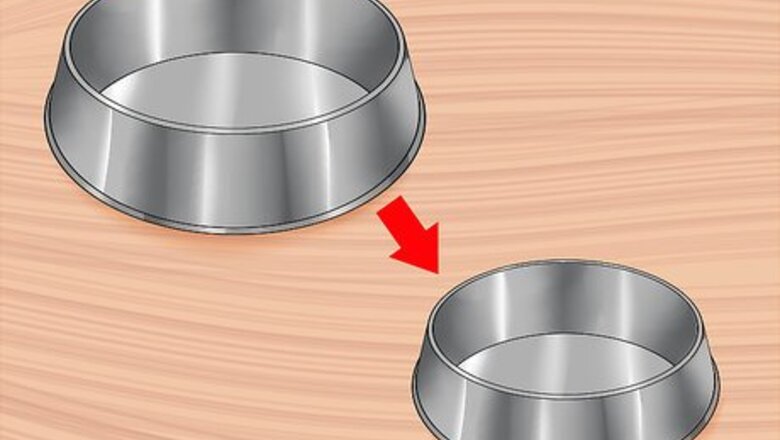
views
Changing the Food Bowl
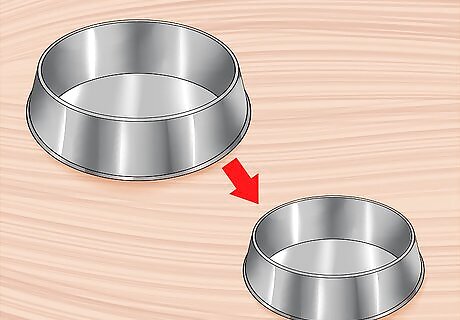
Swap the old food bowl for a new one. Your cat may avoid eating based on the shape or size of its food bowl. Exactly what your cat doesn't like about a particular food bowl will depend on your cat's specific preferences. Try offering food in a new food bowl that has different features from the first to encourage your cat to start eating more easily. For example, if the original food bowl was large, opt for a smaller one. Swapping out a rectangular bowl for a circular one can let you know if the shape of the bowl was bothering your cat.
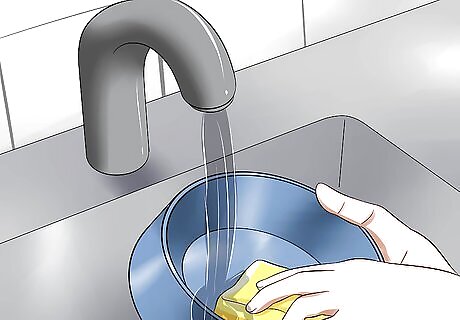
Clean the food bowl. Both humans and cats dislike eating out of dirty bowls. Any leftover food can give off smells that will make your cat less likely to eat its food. If your cat's bowl hasn't been cleaned in a while, you can give it a quick wash to help make it more appealing to your cat. You can wash the cat's bowl with soap and water. Make sure you clean out any old food that may have become stuck to the bowl. Fully rinse all soap off from the bowl and make sure it is completely dry before using it again.
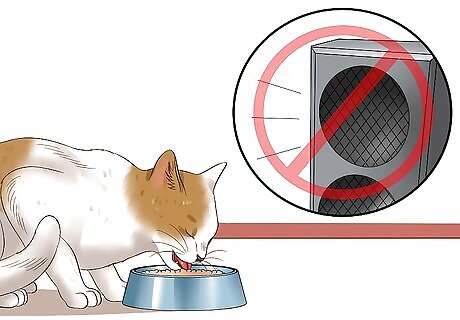
Move the food bowl. The location of the food bowl is important when trying to get your cat to eat more of its food. Cats prefer clean and quiet places to eat, free from loud noises, bad smells and other animals. Check the location of the food bowl and move it if needed to help your cat recover its appetite. Make sure the food bowl is in a quiet place. Keep the food bowl away from the litter box.
Offering the Right Food
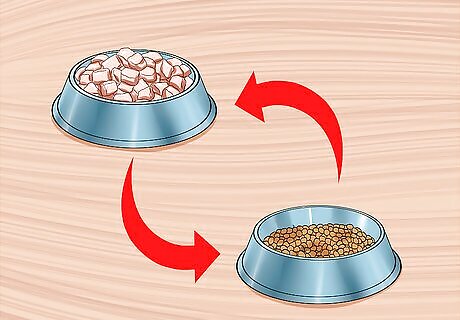
Change the consistency of the food. Your cat may have gotten tired of a certain food or type of food. Your cat may have been fed dry food for a while and could now be craving something with a higher moisture content. On the other hand, your cat may be tired of wet food and wanting its old style dry food back. Whatever the case, try adding in food that has a different consistency than normal to encourage your cat to eat more of it. The main styles of cat food are dry, semi-moist, moist and wet. You can try adding wet food to your cat's meals to see if it prefers that style of food. You can add water to dry food to help change the consistency of it. Warming the food up to room temperature can also help catch your cat's interest.
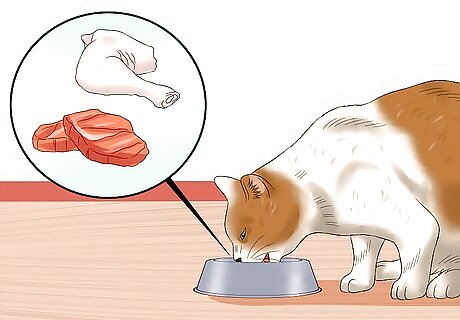
Try offering a new type of food. Not unlike humans, cats can enjoy variety in their diet. If your cat has suddenly stopped eating as much as they used to, you may want to switch the food you offer. Changing the food to new flavors and ingredients can make your cat interested again and get them hungry for more. Try adding new types of food to your cat's regular meals and watch to see which types of food it seems to prefer the most. Try offering food with new ingredients and flavors and taking note of which ones your cat eats more of. Whenever possible, try to offer the freshest food you can. If you are concerned about quality, try looking for AAFCO certification.
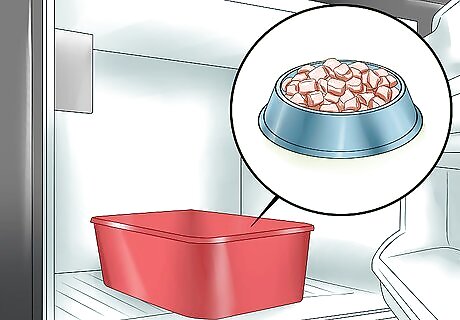
Keep your cat's food fresh. If your cat's food has gone stale, they may not want to eat all of it at meal times. To help encourage your cat to eat, you'll want to keep its food as fresh as possible. Try using some of these tips to help keep your cat's food fresh and appetizing: Try to avoid buying more food than you need. Ideally, your cat should eat all of the food before the expiration date. It can be a good idea to buy small amounts of different foods. This will allow you to switch which foods you offer on a regular basis. Wet foods can be stored in Tupperware and refrigerated. Try warming the food up before serving it to make it more appealing.
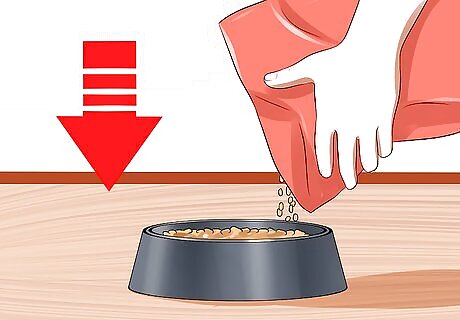
Offer less food at once. You'll want to pay attention to how much food you are offering your cat. Offering too much food can cause the excess to go to waste. Your cat may be eating plenty of food, but it may appear as if they are going hungry because of the leftovers. Make sure you are feeding your cat the appropriate amount of food to gauge exactly how much they are eating or not eating. The best amount of food to feed your cat will vary depending on its size, age and activity levels. Ask your veterinarian for the optimum amount of food you should be feeding your cat.
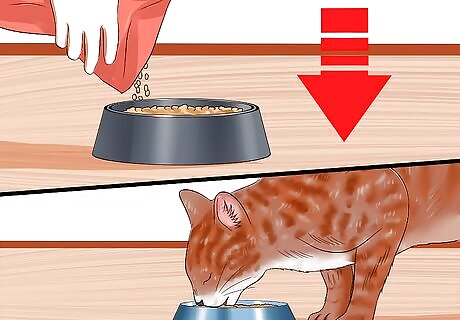
Make changes to your cat's diet slowly. Whenever you are adding new types of food to your cat's diet, doing so slowly can help your cat adjust. Changes made too quickly can make your cat uncomfortable and may actually result in it eating less. Slowly add new food to your cat's diet to help encourage them to eat more and learn what they enjoy. Start by mixing in only a small amount of the new food to their usual meal. Gradually increase the amount of the new food you offer while reducing the old food. Eventually your cat will only be eating the new food. If your cat doesn't seem to be eating the new food, slowly return to the original food before trying another food.
Learning Your Cat's Eating Habits
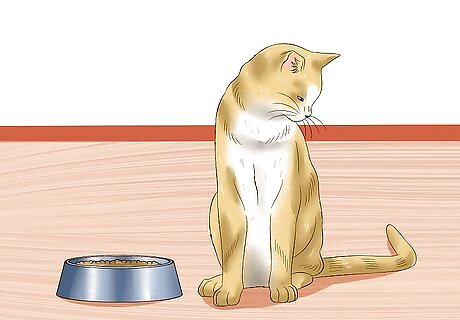
Learn what's normal for your cat. All cats will have different eating habits. These habits may also change throughout your cat's life. It can be useful to know what amount of food your cat normally eats to allow you to look for any abnormal behavior. Changes in appetite can indicate a health issue or may be something more minor that needs addressing. Keep track of your cat's eating habits and learn more about what's normal for it to better understand how you can help. Older cats will not eat as often or as much as younger cats will. If your cat suddenly stops eating as much, schedule a visit with your vet. You may be offering too much food and your cat may too full to eat all of it.
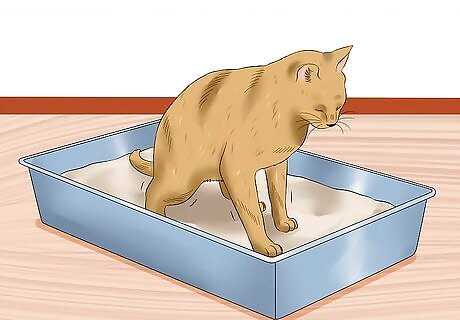
Check for signs of health issues. If your cat suddenly starts eating less food than it normally does, it may be an indication that there is a health issue. Appetite and the ability to eat can be affected by a number of different ailments. If you suspect your cat has fallen ill, it's time for a visit to the vet. Loss of appetite may indicate some of these following problems: Anemia Ulcers in the mouth Stomach acid or urea buildup Problems with teeth or gums Constipation Issues with internal organs
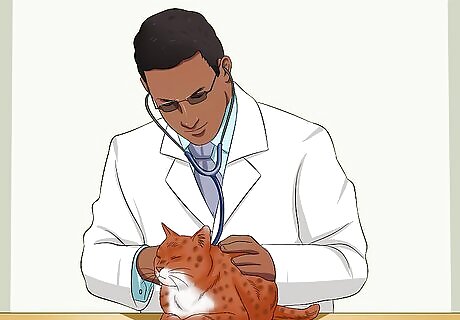
Take your cat to the vet. If your cat has serious trouble eating its food, you will need to take it to your veterinarian. Your veterinarian will be able to determine the cause of your cat's changes in appetite. Working with your veterinarian can also help you address health issues quickly and prevent them from becoming more serious. Speak with your veterinarian today if you think your cat has had a sudden or drastic change in its appetite.















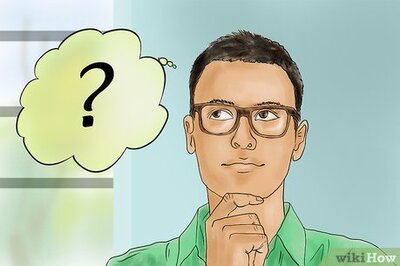

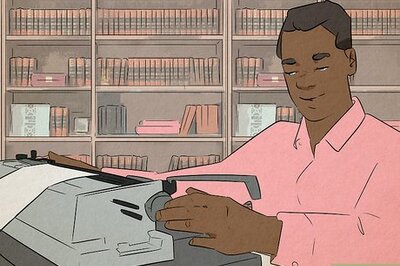


Comments
0 comment